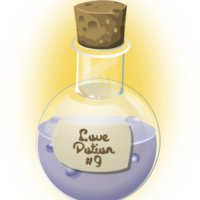Spanish grammar isn’t always easy. For example, there are two different possibilities for the verb “to be”: ser and estar. Today, we’re going to look at these two Spanish words, ser vs. estar, to get you off on the right foot.

The Great Spanish Debate: Ser vs. Estar
The verbs ser and estar both translate as “to be” in English, so they’re very important for learning the language. Once you understand the difference between these two verbs, you’ll have taken a huge step forward. You’ll also find examples and tips at the end of this article that should get you through the most difficult situations and help you choose the right verb for any context.
To learn more common Spanish verbs, check out our Spanish vocabulary lists.
Even though it’s challenging to learn the difference between the Spanish words ser vs. estar (because they both use the same English word), there are pretty simple rules for how to use them. Let’s start with the basic idea:
Ser is used to talk about constant states of being, while estar is used to talk about temporary conditions.
Primary uses for the verb ser
There are 5 main uses for the verb ser.
- Identify and define a person or a thing
Ella es mi hermana pequeña (= She is my little sister)
Mi coche es grande y negro (= My car is big and black)
Here, we use the verb ser to talk about the permanent status of a person or object. These permanent qualities can include names, physical descriptions, and even religions or beliefs.
- Nationality and origins
Yo soy española (= I am Spanish)
Mi profesor es de Estados Unidos (= My professor is from the United States)
The place someone or something comes from and the material from which something is made can both be considered an origin. That’s why you can also say: “Esta mesa es de madera” (= This table is wooden).
- Professions and leisure
Él es médico (= He is a doctor)
A profession or leisure activity is what a person does for a living or to pass their time. The verb ser is also used to talk about these characteristics. But be careful: unlike in English, Spanish never uses the determinant when talking about professions. That’s why you’ll see “él es médico” (= literally, “he is doctor”) and not “él es un médico”.
- Qualities of a person, place, or thing
Los ratones son pequeños (= Mice are small)
María es muy guapa (= Maria is very beautiful)
Nueva York es enorme (= New York is huge)
The verb ser is also used to describe any fixed trait. It’s true that some of these statements can be subjective, but they are constant for the person making the statement. That’s why ser is used.
- Possession
El libro es de mi hijo (= It is my son’s book)
In Spanish, possession is considered a constant state. That’s why we use ser.
Primary uses for the verb estar
Estar, however, is used to talk about temporary states and locations. The verb estar has four main uses that we’ll talk about below.
- Placement and position
Mi casa está en el centro de la ciudad (= My house is downtown)
Mi abuela está sentada (= My grandmother is sitting)
We use estar to talk about someone or something’s physical position. But be careful – when talking about the location of an event or party, use the verb ser. That’s why you’ll hear things like: La fiesta es en mi casa (= The party is at my house).
- An action
Ella está hablando español (= She is speaking Spanish)
Estar is used to talk about actions in progress and is generally followed by a gerund.
Interestingly, you also use the verb estar when talking about death in Spanish. For example: Mi bisabuelo está muerto (= My great-grandfather is dead). - Describing a “temporary” state
Hoy estoy muy cansada (= I am very tired today)
Mi hijo está enfermo (= My son is sick)
The verb estar is used to describe someone or something’s physical or mental state, because these are considered temporary conditions.
- Emotions
Estoy triste porque han terminado las vacaciones (= I am sad because vacation is over)
Ella está feliz porque ha ganado la lotería (= She is happy because she won the lottery)
Emotions aren’t permanent states, and they can change at any time. That’s why we use the verb estar to describe them.
Examples and tips
The best way to understand the difference between ser vs. estar in Spanish is to apply them to real situations. Here are three examples with a few tips to help you choose between the two verbs.
Talking about someone’s personality
Look at these two sentences:
Sara es una persona feliz (= Sara is a happy person)
Sara está de buen humor (= Sara is in a good mood)
Being happy is part of Sara’s personality. Because it’s a permanent trait, we’ll use the first verb, ser, for that sentence. But mood can change over the course of the day. It’s temporary, so we’ll use the verb estar for the second sentence.
One tip for choosing ser vs. estar in Spanish is to try to place the word “persona” before the adjective. If the word “persona” (= person) fits smoothly into the sentence, then ser is the right verb. If it doesn’t fit, and if you think the context is about a state of being rather than the person themself, you’ll want to use the verb estar. For example, you’d never say “ella es cansada” because the sentence “she is a tired person” doesn’t sound natural. Fatigue is temporary, so you’ll use the verb estar: “está cansada.”
Physical description
Él es muy guapo (= He is very handsome)
Él está muy guapo esta noche (= He looks very handsome tonight)
We’ve already talked about using ser to describe the physical aspects of a person, place, or thing. Warning: If you’re talking about a permanent trait, you’ll use ser. Let’s look at our example again: él es muy guapo = he is very handsome. However, if we’re talking about a temporary or passing characteristic, you’ll use estar. In our example, we said: él está muy guapo esta noche = he looks very handsome tonight (maybe he’s wearing an elegant suit, for example).
Talking about a place
Nosotros somos de Nueva York (= We are from New York – in the sense of “origin”)
Nosotros estamos en Nueva York (= We are in New York)
In the first case, we’re talking about people’s origins, which are an unchangeable fact. So we use the verb ser. But in the second case, we’re talking about the place the people are in, which is temporary. So we use the verb estar.
Need a tip to help recognize which verb to use when talking about a place? Check to see if the preposition “de” is in the sentence. This indicates an origin. If you see the preposition “de”, then you know that the sentence expresses an origin and that you should use the verb ser. However, if you see the preposition “en” in the sentence, then you know it’s talking about the place where someone or something is for a moment, and that you should use the verb estar.
This is a lot of information all at once, but don’t worry: with time and practice, using these two verbs will become second nature. A good exercise is to observe the way they’re used in expressions you see in our courses and our Spanish learning app. And if you’re a beginner and you make a few mistakes, don’t sweat it. The person you’re talking to will still understand what you’re saying, believe me!
Ser vs. estar chart: A handy trick for remembering when to use each verb
We came up with mnemonic devices to help you remember when to use ser and estar. Check it out:
When to Use Ser | When to Use Estar |
|---|---|
| Possession | Temporary state |
| Occupation | Action |
| Trait | Placement/position |
| Identity | Emotion |
| Origin | |
| Nationality |
Mirari’s Video Tips for Learning Ser vs. Estar
You can find all of Mirari’s tips about when to use ser vs. estar in our YouTube video below. The video is in Spanish but there are subtitles in 6 languages, including English. To find the subtitles, just click on the gear at the bottom right. You can also slow down the playback speed if needed (again, just click on the gear).
Subscribe to our YouTube channel for more tips!
If you found this helpful, read our article on Spanish irregular verbs. It will help you understand how to conjugate irregular verbs and introduce you to a few you definitely need to know!
Related posts:
Start improving your Spanish today

Good news: we can help!
More good news: you can get started for free! With your free trial, you can test drive the most effective method for learning Spanish for the next 15 days!
Vocabulary flashcards, videos with subtitles, audiobooks, articles adapted to your level – with MosaLingua Premium (Web & Mobile), you’ll have access to all this and more. Get started right now. It’s free—and risk-free—to try!




Comments